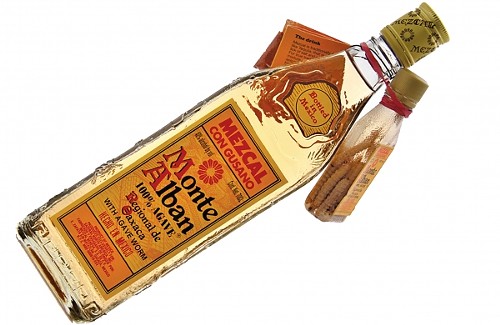With Mexico’s annual Cinco de Mayo celebration happening this week, I thought I’d pause to consider that country’s second most popular liquor (after tequila, of course): mezcal.
There is a myth, largely perpetuated by college-age revelers in this country, that mezcal—also sometimes spelled mescal—has hallucinatory properties. In fact, mezcal has zero to do with the hallucinatory drug mescaline, other than sounding similar. Although, I have to admit, the cheaper brands of mezcal—the ones with the worms in the bottom of the bottle—can come close to producing hallucinations. That’s not because of any psychotropic qualities necessarily, but because they are poorly made, have a lot of icky additives that you don’t want to put into your body or brain, and can cause world-class hangovers.
Most mezcal comes from southern Mexico, where the agave used to produce mezcal comes from plantations terraced into the hills surrounding the city of Oaxaca. In that colonial city, you’ll find dedicated mezcal bars such as Mezcalería Los Amantes and La Casa del Mezcal, where high-quality mezcal is poured into brandy snifters and the mezcals themselves are as interesting and as varied as the world’s best tequilas and cognacs.
As with tequila, good mezcal is made from the maguey plant, a form of agave. In fact, technically speaking, all tequila is mezcal, although not all mezcal is tequila. But that’s another story. The actual word “mezcal” comes from Nahuatl words meaning “oven-cooked agave.” Tequila and mezcal are similar in alcohol content, both weighing in at about 40 percent.
Mezcal is normally drunk straight, and has a rich, smoky flavor, thanks to the process by which the piña—the heart of the maguey plant—is grilled or roasted over hot rocks, traditionally in stone-lined pits. The piñas are covered with layers of palm or agave leaves and earth and left to cook for two or three days, imparting smoke and earthiness to the piñas, which are then left to stand in the sun for days before processing and fermenting. In addition to smokiness, the baking of the piñas serves to caramelize their sugars, imparting a slightly sweet flavor that helps to balance the smokiness.
As with tequila, if you want the best-quality mezcal, look for labels that say “100 percent” agave on them. Lesser-quality mezcal is called mixto and is required only to have 80 percent agave. Unfortunately, it’s not easy to find much mezcal diversity here in the United States, with the Monte Alban brand being the default mezcal that most stores and bars carry, including the state of Utah. Not that there is anything wrong with Monte Alban ($23.99); it’s just that once you try it, it’s unlikely you’ll ever go back for a second bottle. And that’s a shame, because there are great premium mezcals like some of those made by quality producers such as Divino, Del Maguey, Scorpion, Fidencio, Sombra, La Fogata and Los Danzantes that are well worth seeking out. As mentioned, they can even be sipped like cognac and, thanks to their rich, smoky taste, actually pair quite nicely with premium cigars.
Oh, about that worm in the bottom of some mezcal bottles. Well, in reality, it’s not a worm at all, but rather the caterpillar or larvae of a mariposa night butterfly that feeds on the maguey (agave) cactus. To be honest, I’ve never even been offered a worm (or lime or salt) with mezcal in Oaxaca, where most of the good stuff is consumed. That only seems to happen in touristy bars in places like Cabo and Cancun.
I hope you find some marvelous mezcal for your Cinco de Mayo!
More by Ted Scheffler
-
Flavor on the Western Front
Nomad Eatery ups the ante for off-airport eats.
- Dec 13, 2017
-
Under the Christmas Tree
Holiday gifts for cooks, foodies and winos
- Dec 6, 2017
-
Spreading the Love
Amour Café creates simple yet scrumptious fare.
- Nov 29, 2017
- More »





